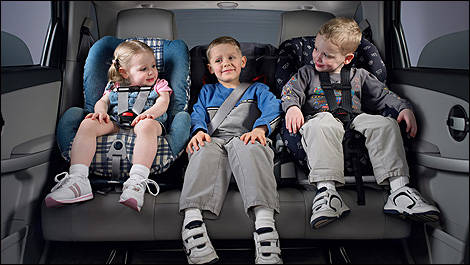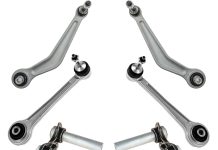Car seats are more than mere accessories; they are guardians of safety, entrusted with the task of protecting our most precious passengers during journeys. Navigating the realm of car seats can be a journey in itself, filled with questions and choices. In this comprehensive guide, we will embark on a journey through the world of car seats, delving into their significance, types, and the key factors that ensure you choose the perfect car seat for your child.
The Guardians of Safety
Car accidents can happen unexpectedly, and their impact can be devastating. Car seats, whether designed for infants or older children, are engineered to act as a protective cocoon, shielding young passengers from harm. These seats are not just comfortable places for children to sit; they are meticulously crafted safety tools designed to distribute crash forces, reduce impact, and provide the highest level of protection possible.
Exploring the Types of Car Seats
Car seats are tailored to cater to the unique needs of children as they grow. Let’s explore the primary types:
1. Infant Car Seats: Rear-facing and designed for newborns and infants, these seats offer crucial head and neck support for the youngest passengers.
2. Convertible Car Seats: These versatile seats adapt to both rear-facing and forward-facing positions, accommodating your child as they transition from infancy to toddlerhood.
3. All-in-One Car Seats: Offering rear-facing, forward-facing, and booster seat functionalities, these seats are designed to accompany your child through multiple growth stages.
4. Booster Seats: Booster seats elevate older children to the right height for adult seat belts, ensuring proper belt placement for maximum safety.
Key Factors in Choosing the Right Car Seat
1. Age, Weight, and Height: Choose a car seat that aligns with your child’s developmental stage and size. Different car seats cater to different age groups and growth milestones.
2. Safety Standards and Ratings: Prioritize seats that meet or exceed safety standards set by regulatory authorities. Look for high safety ratings from organizations like the National Highway Traffic Safety Administration (NHTSA).
3. Ease of Installation: The effectiveness of a car seat is dependent on proper installation. Select a seat that is easy to install correctly, minimizing the chance of errors.
4. Comfort and Ergonomics: Comfortable journeys lead to happier passengers. Opt for seats with adequate padding, ergonomic design, and adjustable features.
5. Long-Term Value: Consider convertible or all-in-one car seats that provide value over time as your child grows, eliminating the need for frequent replacements.
6. User Reviews: Listen to the experiences of other parents. User reviews can provide insights into real-world usage and any potential issues.
A Commitment to Safety
Your commitment to car seat safety doesn’t end at purchasing the right seat. Proper installation and use are paramount:
- Read the manufacturer’s manual thoroughly to ensure correct installation.
- Double-check the tightness of harnesses and straps before every ride.
- Monitor your child’s growth and adjust the seat accordingly.
In Conclusion
Car seats are not just objects; they are gatekeepers of safety. By understanding the types, considering factors like age, weight, safety standards, and prioritizing proper installation, you embark on a journey to provide the highest level of protection for your child during every car ride. Remember, the journey of parenthood is a shared one, and ensuring your child’s safety on the road is a shared responsibility of vigilance and care.







